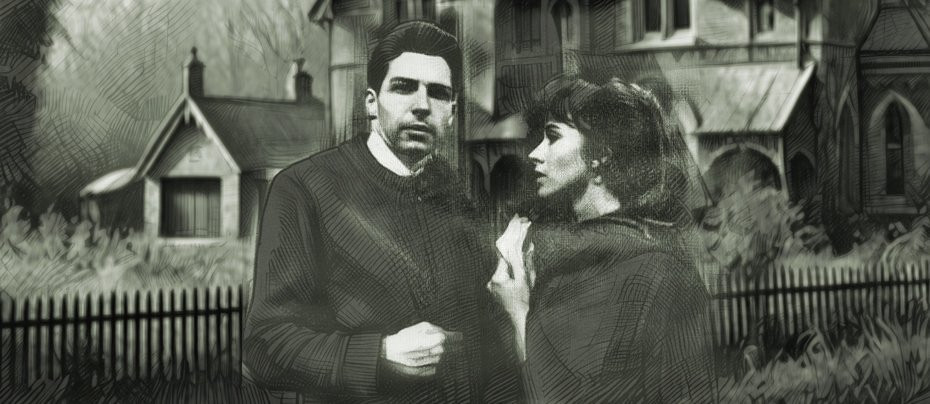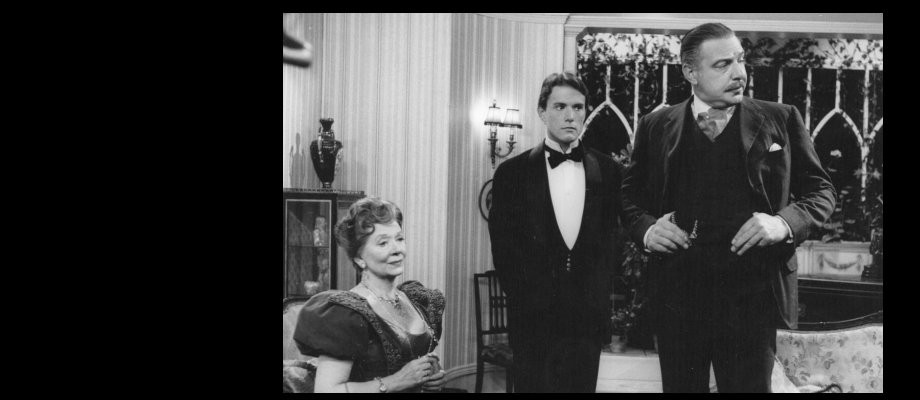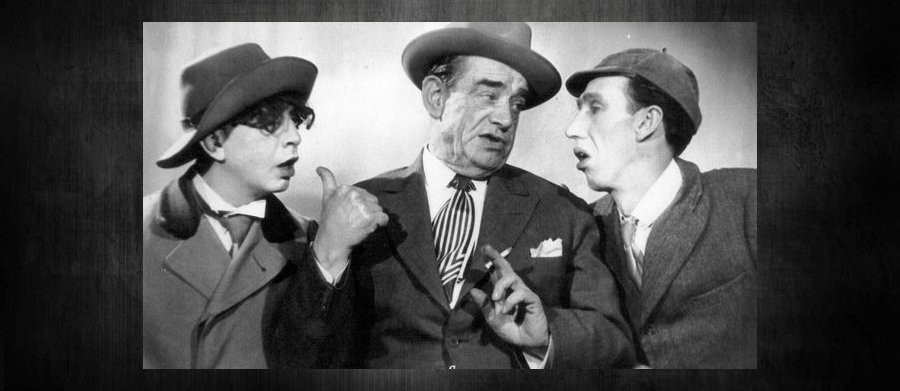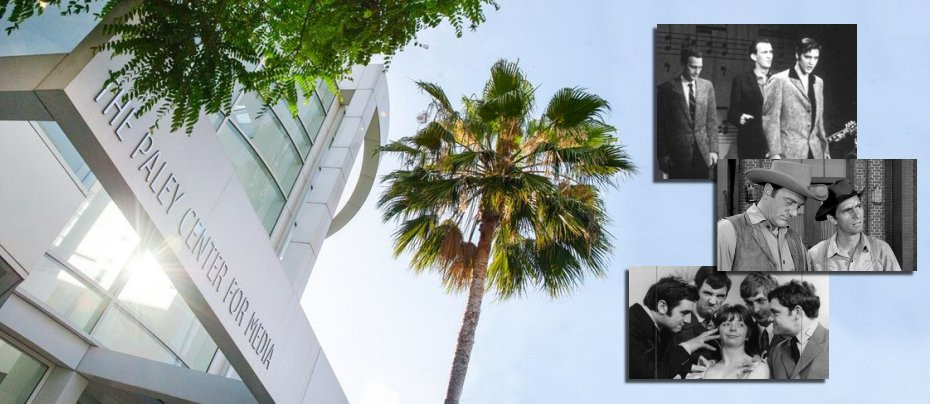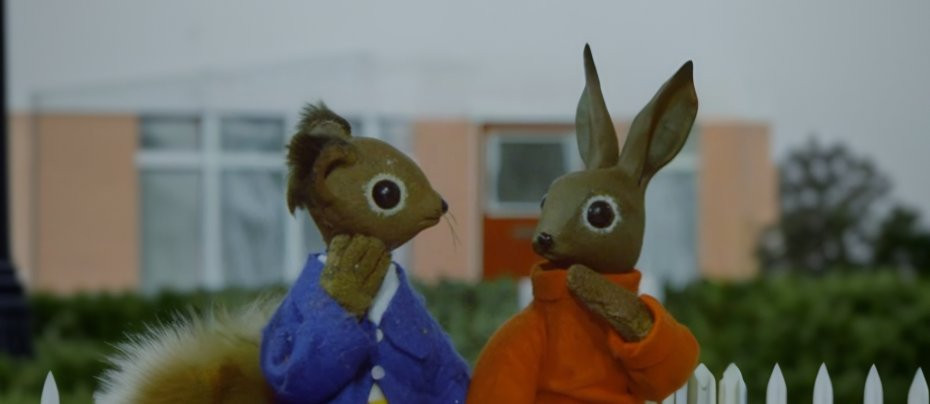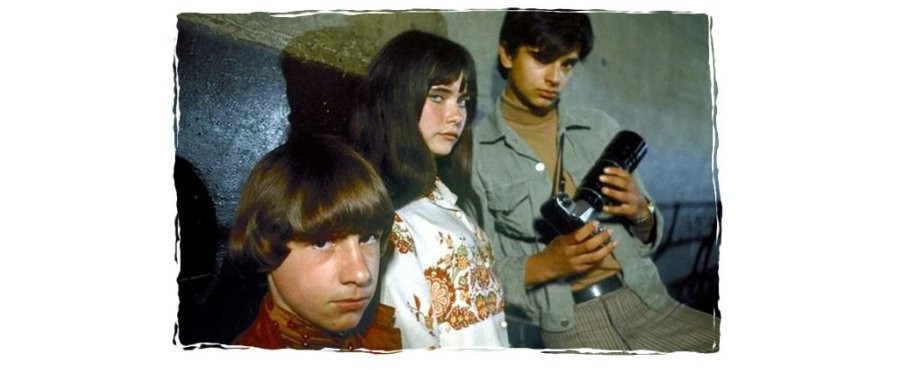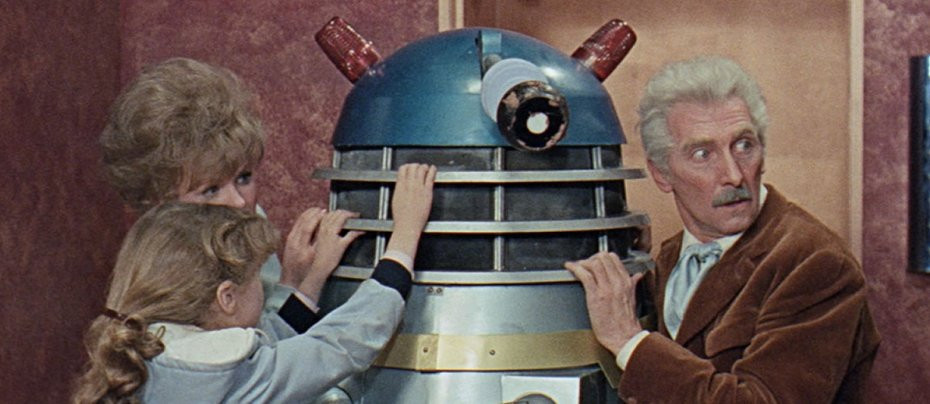
Doctor Who? The '60s Dalek Movies
Dr. Who is not a mysterious, somewhat sinister alien, but a genial old human gent with a passion for invention.”
The two 1960s Dalek movies have always occupied a strange place in the hearts of Doctor Who fans. Repeated endlessly on television over the years since their cinematic release, the films were far more widely seen by the general public than any of the original television serials for a good many years, most casual viewers probably don’t realise that these two features do not form part of the ‘true’ Doctor Who at all. For hardcore fans, the distinction is obvious and vital, and many refuse to see the movies as anything other than a cheap substitute. Now, the movies may not form part of the main continuity, but they’re both good slices of fun, family science-fiction entertainment, and that’s what Doctor Who is all about.
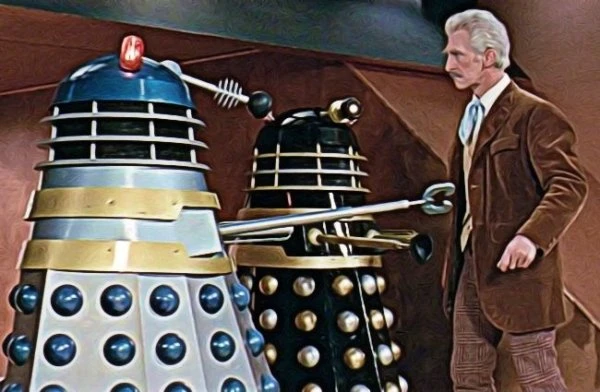
The films were produced by Milton Subotsky and Max Rosenberg for Aaru Productions, a division of their production company Amicus – the horror studio that wasn't Hammer. They had purchased the option to make cinema version of the two first two Dalek serials from Terry Nation and the BBC for the princely sum of £500. 1965's Dr. Who and the Daleks, based on the first Dalek serial (most commonly just called "The Daleks") has the distinction of being the first production to feature someone other than William Hartnell in the role of the Doctor. Peter Cushing is Dr. Who, and it’s difficult, with so many regenerations having gone by, to realise how big a deal this is. The movie version is stating from the off that this is a new production, and not part of the series. The differences are immediate and obvious: instead of the familiar swirling visuals and the classic Who theme, we get a typically jaunty tune on a coloured background, that could have come from just about any British film of the 1960s. As we open on the Whos (yes, their name actually is Who in this one!), it’s clear that we’re in for a much more light-hearted affair than the original serial. We see Dr. Who reading a copy of The Eagle, while his granddaughters, Susan and Barbara, are flicking through science texts. Before long, Ian has come along, ready to take Barbara out on a date. This isn’t the crew we know...
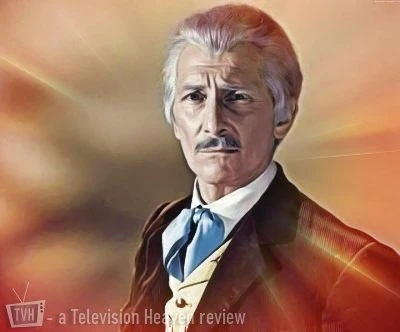
Taking the four characters one a time, it’s amazing how different they are to their television counterparts. Dr. Who is not a mysterious, somewhat sinister alien, but a genial old human gent with a passion for invention. Cushing, best known for his Hammer roles including Sherlock Holmes, Frankenstein and Van Helsing, plays him with an absent-minded amiability. If there's any version of the Time Lord he's like, it's Sylvester McCoy in his rather juvenile first season. Dr. Who is dressed in Edwardian-styled clothes, not because he travels in time and picks up his habits from various eras, but because he’s quirky and eccentric (something he shares with Cushing, who frequently dressed like this, and often took his period costumes home with him from productions). Doddering about with his knees bent in an attempt to simulate old age, it’s by no means a subtle performance, but it’s certainly a charming one.
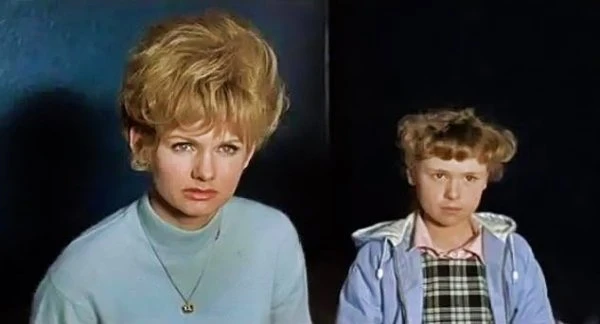
Susan, or Suzie as she’s more often referred to, is considerably younger than her television counterpart. Played by twelve-year-old Roberta Tovey, she’s something of a child prodigy, able to understand the workings of her grandfather’s time machine and continually racing off into potentially dangerous situations. Unlike her alter ego, however, she doesn’t continually fall over, sprain her ankle, or squeal and sob at the slightest provocation. This small human girl is actually are far more resourceful and believable character than the alien Susan ever was!
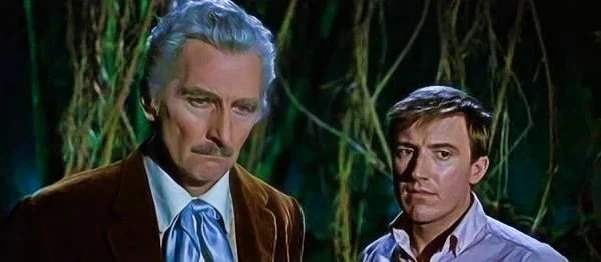
Barbara, who is played by Jennie Linden (Hammer's Nightmare), is also considerably divorced from her television counterpart. Rather than her uptight schoolteacher, this version of Barbara is Suzie’s elder sister, a hip(ish) eighteen year-old with only a passing interest in the Who family’s scientific endeavours. Other than this, though, she’s pretty slimly characterised; even her fondness for Ian seems to vanish after the first quarter of the film. Ian is easily the character most different from his small-screen forbearer. Brought in entirely as comic relief, he’s well-meaning, brave but amusingly clumsy. Roy Castle (legendary singer, dancer, actor and presenter) puts a pratfall into almost every action that he performs, and this can become very wearying, but he does imbue the character with considerable charm, and you’re rooting for him all the way through (and he never even gets a proper snog off Babs!)
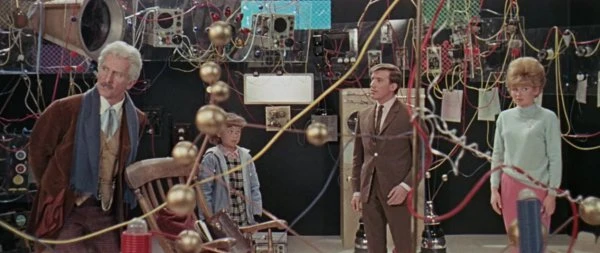
The TARDIS is present and mostly correct, but one has to ask why? Copying it wholesale from the BBC television series, the producers seem to have forgotten that the ship was in disguise as a police box and got stuck in that shape. Here, however, the TARDIS, or just “Tardis”, as it is known, is police box-shaped for no readily apparent reason. The interior is equally baffling; it’s all very intriguing, but if anyone actually tried to operate the thing they would most likely trip over several loose wires and break a limb on the way down. However, at least the exterior and interior doors line up – something that didn’t happen on television until 2005!
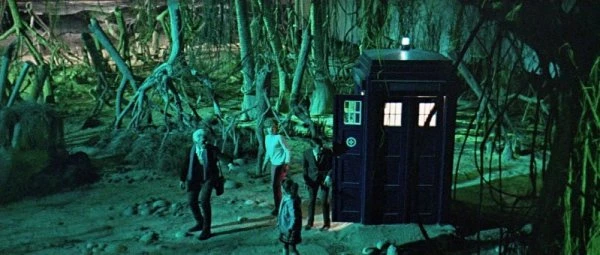
“Daleks are wisely kept as the vindictive, scheming monsters of old.”
The story itself stands up very well even now. In fact, it’s an improvement on the original in terms of pacing. Truncated from the seven-part serial into a single feature, it loses the drag of the original. Of course, the original was never intended to be viewed in one sitting, whereas this movie is. Still, you have to admire Milton Subotsky (and David Whitaker, who worked upon it, uncredited) for turning the serial into a fast paced and fun romp without losing any of the key elements. We’re onto the planet Skaro in a trice, with the early explorations played out more slowly, really allowing the creepiness to build.
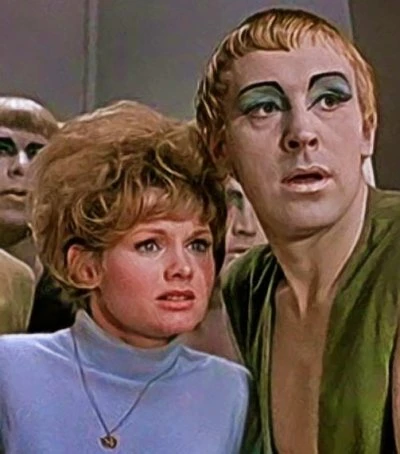
Admittedly, the petrified forest, although impressively created within a vast set that actually looks like a forest (a Who rarity), loses some of the chilling atmosphere of the black and white original. Once we’re into the Dalek city, after a replacement fluid link (the Doctor – sorry, I mean Dr. Who – having lied about the damage to the original as an excuse to explore), things pick up the pace considerably. The city is another very impressive piece of work, entirely plastic (a first in the relatively low-tech 1960s), although the addition of drapes and lava lamps hints at a previously unexpected love of interior design in the Dalek psyche.
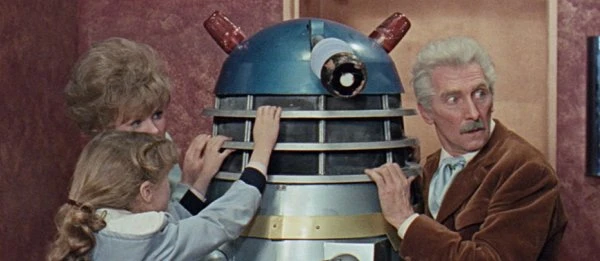
The Daleks themselves are equally impressive. Although the film is of a lighter tone than the original, the Daleks are wisely kept as the vindictive, scheming monsters of old. Although larger, more colourful and fitted with fire extinguishers in place of ray guns, they retain their menace, and their voices are powerful and alarming. The Dalek mutant, seen here fleetingly in a clone of the original serial’s most famous set piece, in which the mutant is evicted from its travel machine, is chilling – a slimy, green claw slithers out from beneath a cloak, leaving our imaginations to do the rest. The peaceful, humanoid Thals, too, are well realised. Although absurdly made-up, and looking a touch 1980s as a result, their simple two-piece outfits are a great improvement on the bizarre plastic body suits of the original. They are given relatively little time on screen, far more attention being paid to their Dalek cousins, but are generally played convincingly. The final battle is stirring stuff, a tremendous set piece by 1960s Brit standards that still holds up very well. It isn’t long before the travellers set for home, ending the film on a sadly rather naff note when they materialise in the midst of some stock footage of Roman legionaries.
The second of Aaru’s Dalek movies, 1966's Daleks: Invasion Earth 2150 AD, is generally regarded as superior to the first, although in my opinion it’s actually a slightly weaker effort. Based on the serial The Dalek Invasion of Earth, it's an entirely Earth-based adventure. Peter Cushing and Roberta Tovey return as Dr. Who and his granddaughter Susan, however, Ian and Barbara are replaced by new characters. Foxy posh actress Jill Curzon (Smokescreen) plays Dr. Who’s niece Louise, who is basically the same as the first film’s Barbara with less to do. Comedy and kid's TV legend Bernard Cribbins, long before his appearance as Wilf on the BBC's revived Doctor Who, plays Tom Campbell (a vague recollection of the original serial’s heroic David Campbell). Tom is a bumbling but well-meaning police officer, fulfilling the comic relief / hero role that Ian has left vacant. Cribbins performs very well given the fairly limited part; Curzon, however, is pretty wooden – not that she has a great deal to work with either. The returning Whos are more impressive - Peter Cushing actually gives a superior performance to his first, toning down the old man whimsy and making the character a good deal more intense (he’s still not a patch on Hartnell, though), and Tovey remains impressive and likeable as young Susan, despite spending much of this film being carried around with a twisted ankle.
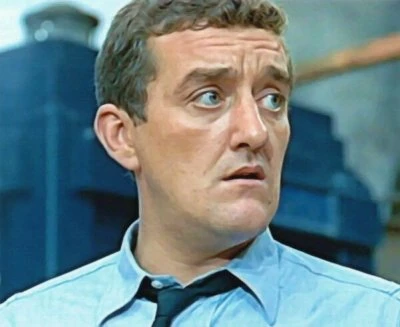
Starting in an unusual but very effective manner, the film introduces Tom as our viewpoint character, failing to stop a jeweller’s shop heist. The moment when he spots a police box on the corner supplies the tingle that we need, knowing that the adventure is about to begin. Stumbling into the apparent police box, he is confronted by the Who family. TARDIS now boasts a redesigned interior, far more plausible and practical than the mish-mash of the first film, but still nowhere near as effective as the televisual control room.
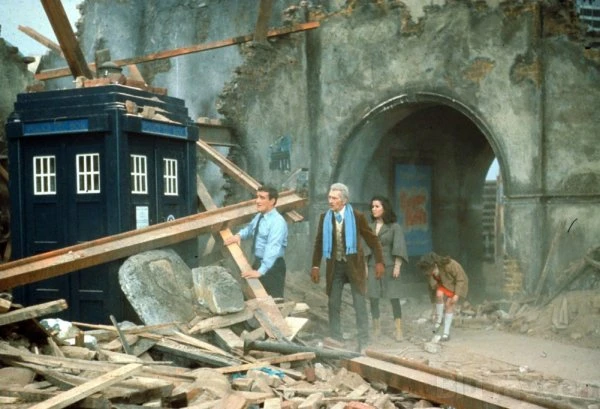
After a bland title sequence (with at least an attempt at the swirling visuals of the television series, even if they fail miserably), we’re straight into the main adventure, materialising in the desolate London of 2150. Disappointingly, the images of a derelict city seen here are no match for those of the original television serial. It looks like a set, and not a particularly impressive one, either – a shame after the excellent sets of the first movie. Whereas The Dalek Invasion of Earth television serial could make its viewers believe that this really was a ruined London, despite its painted backdrops, Daleks: Invasion Earth 2150 AD fails to convince at all, in spite of the greatly increased budget. The numerous billboards promoting Sugar Puffs don’t help – they intrude appallingly upon the atmosphere in a dreadful example of early product placement.
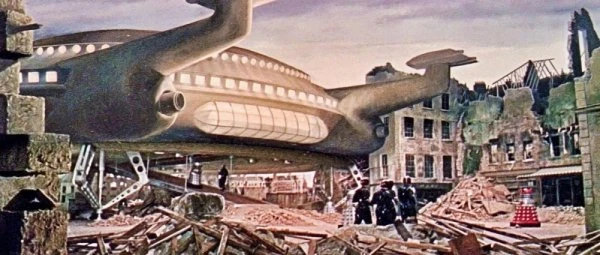
Where the design does work, however, is in the portrayal of both the Dalek spacecraft and their Robomen servants. The former, the “flying saucer” as Tom describes it, is a wonderfully retro bit of space hardware and, while it doesn’t look menacing in any way, it does at least look like a spaceship – a far cry from the pie tins of the original! The Robomen are similarly improved, both in design and the actors’ delivery of the robotised lines. They actually come across as a potential threat, not as a bunch of somnambulistic no-hopers – no doubt their impressive guns help.
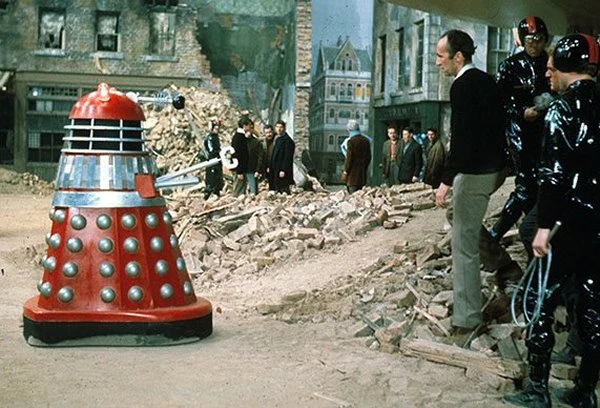
Like the first film, this production tries to use its original blueprint as a source of impressive set pieces. Sadly though, they don’t all come out particularly well. The first of note, the Dalek emerging from the Thames, is over with so quickly there’s barely time to notice it; whereas the original was an effective, tense cliffhanger, this version is simply a prop in a pond. The plot develops much as expected; a streamlined version of the televised original. While Louise and Suzie are taken in by the resistance (including movie Quatermass Andrew Keir as an impressively gruff and hardened Wyler), Dr. Who and Tom are captured by Daleks and sent for robotisation. We are quickly at the resistance’s attack of the Dalek ship, but this is undermined both by the design of the ship’s interior – again, too clearly a rather small set – and the terribly naff attempt at ‘exciting’ music that dogs the soundtrack. Nevertheless, the Daleks are damnably impressive when they finally arrive en masse, massacring the majority of the rebel army.
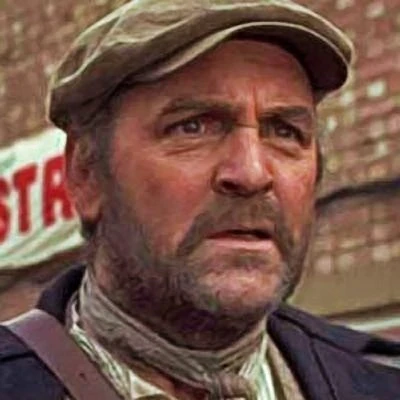
We then get an interminable chase scene, in which the survivors of the massacre, Wyler, David, Tom and Dr. Who, flee in their separate ways. Wyler’s struggle across London, hiding from Daleks in darkened alleys, is effective, but as for Tom’s attempt to hide in the saucer… one asks ‘why?’ We then get a drawn-out scene in which Tom pretends to be a Roboman. Whereas the original serial showed the true horror of robotisation, when a rebel fighter was forced to take down his own processed brother, here we have a comedy skit with plenty of slapstick, silly music and naff robot acting, which is far too long and, crucially, not very funny.
David and the Doctor escape into the sewers. David’s a pretty shallow characterisation in this version, and it seems odd that a movie version would scrap the romantic subplot – it’s usually the reverse in an adaptation of this kind. Naturally, Susan is far too young to be the recipient of his affections in this version, but Louise could have been substituted. It would have been a chance to give both characters some much-needed depth.
Things improve greatly in the film’s second half. Without dwelling too much on an already well-known plot, we’re given a far faster-paced, grittier portrayal of life under the Daleks, with some highly-effective location filming taking place of the endless set work. Keir and Tovey are particularly good together as they make their way over countryside (had a third movie been made, when Patrick Troughton had taken over the television series, Keir, in more of a Quatermassy style, would have been an excellent movie Doctor). Philip Madoc, a familiar face from 1960s and 1970s television including Doctor Who, makes an appearance as a sinister smuggler, and events move quickly on, with the leads reunited in time for the final incursion into the Daleks’ mothership.
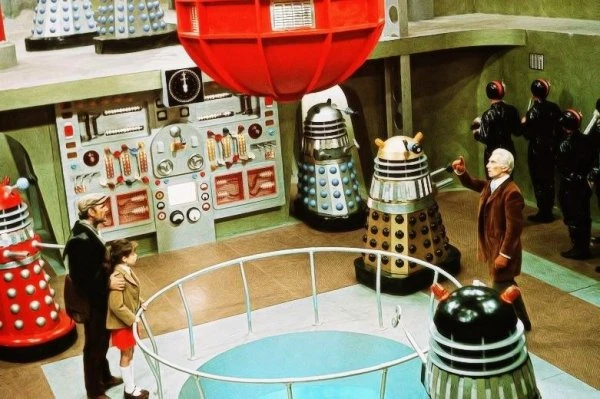
Keeping the television serial’s wonderfully batty idea that the Daleks plan to remove the Earth’s core and to replace it with a motor, in order to turn the planet into a vast spaceship, the movie takes this a step further, using the magnetic properties of the Earth to defeat the Daleks. The sequence of Tom going down the mine shaft is much more impressive and convincing than Ian’s turn on television, and the sight of Daleks being pulled backwards up ramps and crashing through walls is one of the few genuinely amusing images in the film. Altogether, the film just about succeeds, with the second half considerably more involving than the first, although the final moments do feature an act by Dr. Who that his Time Lord counterpart would never approve of, as he drops Tom back a few moments early to foil the opening minutes’ heist. It's a fun adventure, altogether, and while it's a slicker affair than the first film, it loses something along the way. The gritty setting (by kids' movie standards) just isn't as fun as the luminous outer space nonsense of the first film.
Both of the Dalek movies were hits, coasting on the wave of Dalekmania that swept Britain in the mid-sixties, and Dr. Who and the Daleks was the best performing British film of 1965. Daleks: Invasion Earth didn't do as well as its predecessor though; on television, the Doctor had just survived the twelve-week escapade The Dalek Invasion of Earth, and it's entirely likely the British public were a little Dalek'd out. Since the budget for the second film was considerably more than the first, and its takings much lower, the odds of a third film were unlikely. Neither film had made an impact on the American market either; without a television series in the US to back them up, the films were trying to break an unprepared and unreceptive audience. Preliminary plans for a third Dalek film (most likely based on the Nation's third serial, The Chase) were shelved. Over the years, many attempts have been made to bring Doctor Who back to the cinema, the closest run being in the 1990s, which eventually ended up as the 1996 TV movie starring Paul McGann. For the fiftieth anniversary of the series, the feature length special The Day of the Doctor was simulcast in cinemas worldwide, by far Doctor Who's biggest cinematic event. This was followed up a year later with the cinema broadcast of "Deep Breath," the first episode to star Peter Capaldi as the Doctor.
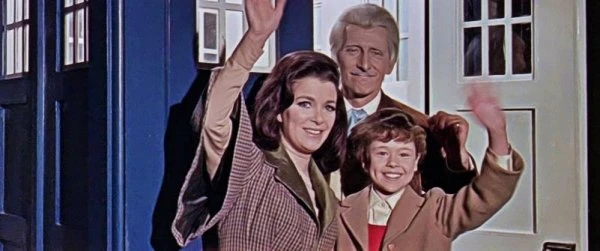
Strangely enough, the closest thing to a third "Dr. Who" movie is At the Earth's Core, a 1976 adaptation of the 1914 novel by Edgar Rice Burroughs. Produced as a follow-up to 1974's The Land That Time Forgot, it was Subotsky's last film for Amicus, and featured Cushing as one Dr. Abner Perry. Barely ever referred to as anything other than Doctor, Cushing's character is virtually identical to his Dr. Who. It's just a step away from being the third Dr. Who film, just with dinosaurs and pterodactyl men instead of Daleks. It was even shown in a double-bill with Dr. Who and the Daleks.
This article was previously published in Television Heaven's TVH Magazine Movie Special
Article by Daniel Tessier
Dan describes himself as a geek. Skinny white guy. Older than he looks. Younger than he feels. Reads, watches, plays and writes. Has been compared to the third, fourth, fifth, sixth, seventh, eighth, tenth, eleventh and twelfth Doctors, and the Dream Lord. Plus Dr. Smith from 'Lost in Space.' He has also had a short story published in Master Pieces: Misadventures in Space and Time a charity anthology about the renegade Time Lord.
Dan's web page can be here: Immaterial
Published on October 28th, 2021. Written by Daniel Tessier for Television Heaven.


